What kind of soil do cucumbers like and how to properly process it before and after planting
To get a bountiful harvest of cucumbers, you need to choose the right place for sowing. Knowledge of the suitable soil characteristics, the ability to process it and prepare it for planting is key. How to do it correctly, read our article.
The content of the article
What kind of soil do cucumbers like
Before planting cucumbers, choose a site with suitable soil or make the ground yourself.... The soil should be light, nutritious, moisture and air permeable, free of silvery inclusions in the form of salts.
Reference! Cucumber has a superficial root system, therefore, when choosing and preparing the soil, it is necessary to pay attention to the characteristics of its upper layers.
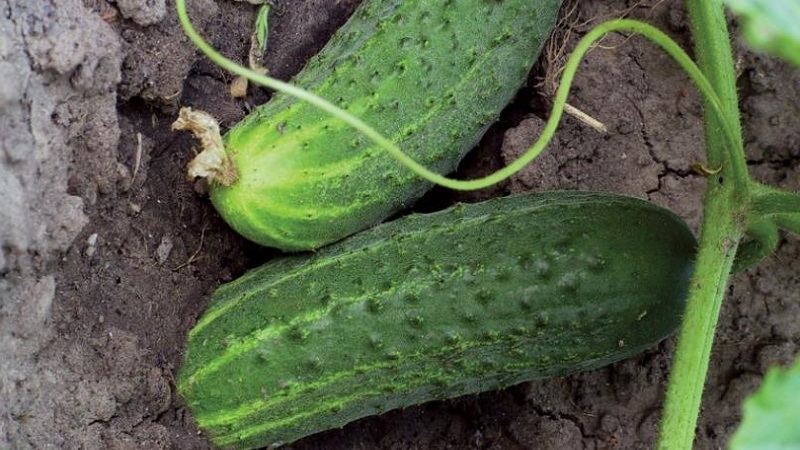
For this culture, a soil with such parameters is suitable.:
- mechanical characteristics - lightweight, loose, air and water permeable;
- acidity - neutral, in the range of 4.5-7 pH;
- temperature - from 12 ° С to a depth of 20 cm;
- humus content is high, especially in the upper layers of the earth;
- humidity - constant, moderate, without drying out and water accumulation;
- microbiological activity is high.
It can be useful:
Why do cucumber ovaries turn yellow and what to do about it
The culture grows better on sandy loam and loamy soils... An ideal ground for cucumbers should include:
- sand - makes the soil light, acts as a drainage material;
- sawdust - organic baking powder (microorganisms responsible for the decomposition of wood, during their activity, actively absorb nitrogen from the soil, which is useful for such plants);
- peat - improves the moisture content of the earth and increases its nutritional value;
- turf - contains organic matter and humus;
- mullein - contains substances that give cucumbers carbon dioxide, creates a greenhouse effect in the garden, protects the culture from sudden drops in temperature;
- humus is a source of nutrients presented in a form that is easy to assimilate.
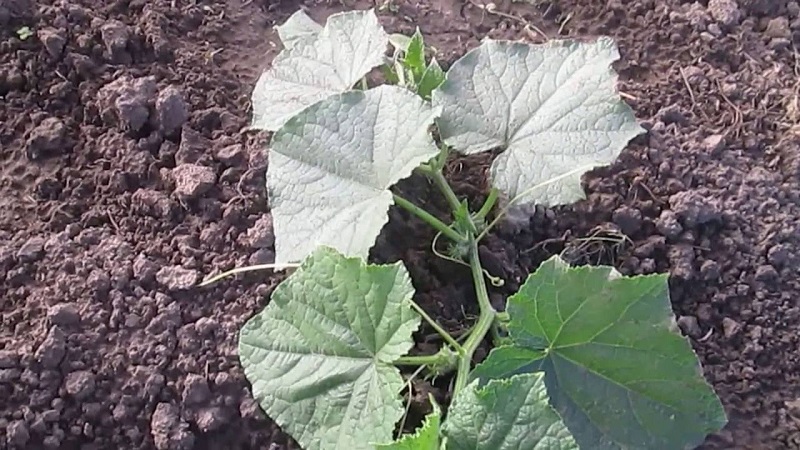
The table shows which soils are suitable for growing cucumbers:
| Soil type | pH |
Summer temperature (at a depth of 20 cm) |
| Forest gray | 4,5-6,5 | above 15 ° C |
| Chernozem and gray soil, chestnut | 6-7,5 | above 15 ° C |
What cucumbers don't like
Cucumbers do not yield in high pH alkaline soils... They also dislike dry and hard ground. In the table you can see unsuitable soils for planting cucumbers:
| A type | pH | Summer temperature
(at a depth of 20 cm) |
How to fix |
| Carbonate and saline | 8-9,5 | 15-25 ° C | Free from salts, lye and add a large amount of humus |
| Swamp (peat and podzol) | 3-5 | from 0 to 25 ° С, sharp drops day and night | Lime abundantly, provide planting protection from temperature extremes. |
| Permafrost taiga | 4,5-7,5 | low | It is necessary to dig up with lime and build "warm beds". |
| Red soil, podzolic, sod-podzolic. | 4,5-5,6 | from 8 ° С | We'll have to deacidify, add humus and make "warm beds". |
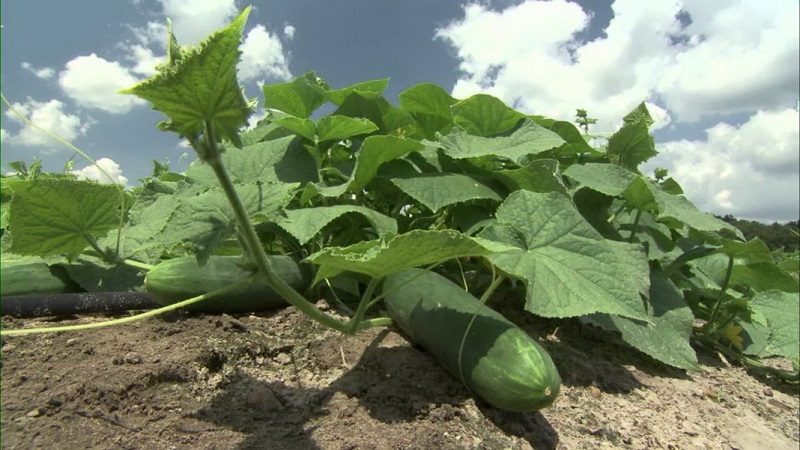
How to prepare the ground before planting
Even the right soil is important to properly prepare for planting cucumbers. In the beds arranged in boxes (greenhouses and bulk), you can replace the old soil with fresh, prepared according to one of the recipes:
- Sawdust, rotted manure and peat are combined in a ratio of 1: 2: 2, after which 250-300 g of wood ash and a dessert spoon of superphosphate, carbamide and potassium sulfate are added to each bucket of the mixture.
- Mix equal amounts of humus, compost and turf. In 5 liters of water, 25 g of superphosphate, a glass of ash and 15 g of potassium sulfate are diluted. This volume of liquid is poured over a bucket of soil mixture.
- Peat, mullein, sand, rotted manure and sawdust in a ratio of 5: 1: 1: 1: 1.
- Turf, compost, high moor peat and sawdust in equal parts.
In other cases, preparation begins in the fall.... To do this, the garden bed is dug to a depth of 25-30 cm and 1 m2 5-8 kg of manure and 10 g of fertilizing with potassium and phosphorus are applied to the soil (can be replaced with a glass of ash).
Attention! If the soil is light and crumbly, then the introduction of organic matter is transferred to the spring.
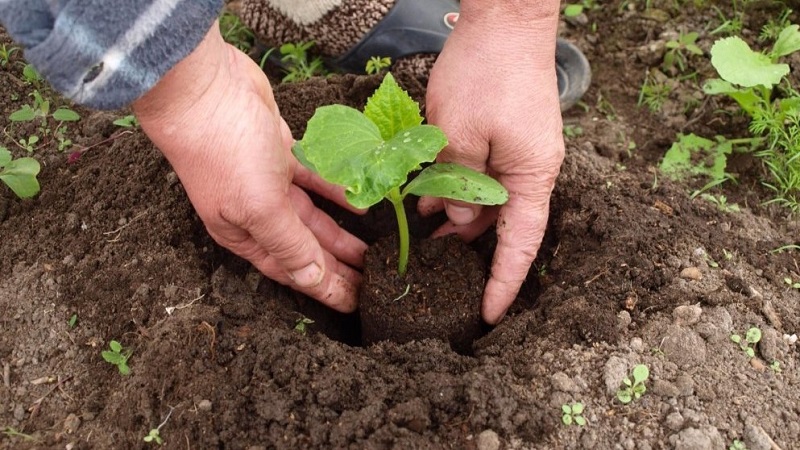
Spring tillage before planting is done like this:
- A week before planting, the bed is dug up again, breaking earth lumps and removing weeds.
- Grooves are formed with a depth of 20-30 cm and filled with rotted manure, compost, hay, foliage or sawdust at the rate of 5 kg per 1 m2.
- The grooves are filled with fertile soil, loosened and covered with a film.
- The day before planting, a mineral complex of 45 g of superphosphate, 20 g of saltpeter and 30 g of potassium salt is introduced.
If the bed is formed in an open area, not protected from direct sunlight, winds and drafts, it is recommended to plant corn or sunflowers around it.
Read also:
Is it possible to cut the leaves of cucumbers and how to do it correctly
What are nitrogen fertilizers for cucumbers in a greenhouse for?
How to disinfect
To disinfect the soil in a greenhouse or garden under the open sky, you can process it with one of these means.
| Means | Preparation and use |
| Potassium permanganate solution | 1 tsp potassium permanganate is diluted in 1 liter of hot water and immediately watered the ground, after which it is allowed to dry. |
| Bordeaux liquid | A 3% solution is prepared and the soil is treated with it after the autumn digging. |
| Fitosporin-M | Dissolve 5 g of the product in 10 liters of water and water the soil abundantly (this volume is enough for 1 m2) in the spring, before sowing or planting seedlings. If cucumbers are grown in a greenhouse, then the walls and ceiling of the building are also treated with this solution. For this, the mixture is poured into a spray bottle. |

How to feed
The soil is fertilized not only at the stage of preparation before planting, but also at different periods of plant development. At the same time, it is important to correctly combine organic and mineral fertilizing, as well as to make them at the right time. The following table will help you understand all the intricacies.
| Cucumber growth phase | Top dressing |
| Formation of the first true sheet | Sprinkle the soil with ammophos before loosening (5 g of the product per 1 m2 soil). |
| The beginning of the flowering period | 40 g of superphosphate, 20 g of potassium nitrate and 30 g of ammonium nitrate are dissolved in a bucket of water and used for watering cucumbers at the root. |
| Active fruiting | The bucket is half filled with manure, poured to the brim with water and insisted in a warm place for 7-10 days. Watered at the root once a week. |
| Suspension of fruiting to activate a new crop wave | Dissolve 3 scoops of "Agronom Pro for Cucumbers" in a bucket of water and water the plants under the root once every 14 days. |
Acidity check
You can measure the acidity of the soil using traditional methods, time-tested. These methods will not determine the exact pH, but will help you navigate before planting cucumbers.
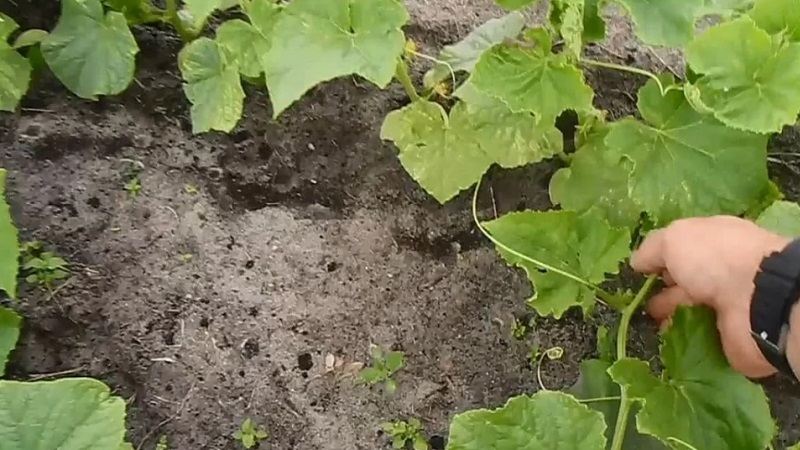
Acidity check:
- Take a handful of dry soil from the garden and douse with vinegar. If small bubbles appear on its surface, then the pH is normal. If there is no reaction, the soil is sour and needs to be calcified.
- Place 5-6 cherry or bird cherry leaves in a transparent glass container and pour 200 ml of boiling water. When the liquid has cooled to room temperature, throw a handful of earth into it. If the infusion becomes green, it means that the soil is neutral, blue is slightly acidic, red is acidic.
- Put some soil in a glass of natural grape juice. If bubbles remain on the surface of the drink for a long time, the soil is neutral on the bed.
- Ordinary weeds will help determine the acidity of the earth. Note what grass you see most often on your site and compare with the data in the table.
| Alkaline | Sour | Slightly acidic | Neutral |
| Field mustard | Horsetail | Creeping wheatgrass | Field bindweed |
| Poppy | Blooming Sally | Clover | Spring adonis |
| White resin | Plantain | Mother and stepmother | White melilot |
| Delphinium | Moss | Chamomile | Sow thistle |
| Buttercup | Dog violet | Nettle | |
| Kislitsa | knapweed |
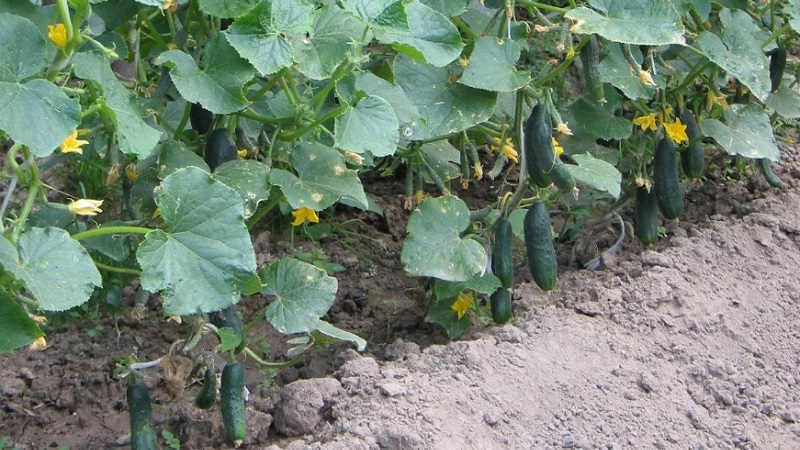
The acidic soil is not suitable for growing cucumbers, therefore, before the autumn digging, 200-300 g per 1 m are introduced into it2 the following means:
- gypsum;
- slaked lime;
- dolomite flour;
- a piece of chalk;
- wood ash;
- crushed eggshell;
- limestone;
- peat ash;
- cement dust.
Before adding these agents, humus and cow dung should not be applied to the soil., otherwise the substances will not work.
Attention! If during the autumn preparation of the beds, the deoxidation procedure was not carried out, pour the soil with manure infusion and liquid nitrogen fertilizing. Also, a place for cucumbers can be sown with phacelia, and after 15 days, dig up the soil along with the sprouts.
To acidify the soil, gardeners use citric and oxalic acid... In 10 liters of water, 60 g of the substance are diluted and the soil is watered. The resulting volume of solution is enough to combat an alkaline and neutral environment for 1 m2 beds.
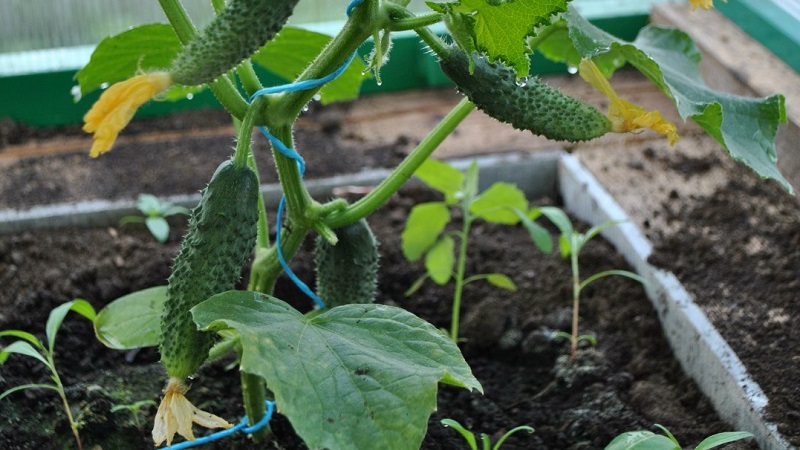
0.5 kg of rotted needles or a mixture of 100 g of sulfur and 1.5 kg of peat will help to increase the acidity of the soil. The agent is applied to the soil in late autumn. Also syou can acidify the soil with the help of rotted manure and mineral fertilizers:
- superphosphate;
- magnesium sulfate;
- ammonium or copper sulfate.
To increase acidity, you can sow a garden bed before winter green manure plants, and in the spring, dig it up along with the seedlings. They will not only improve the quality of the soil, but also fertilize the site.
How to process the garden bed after harvesting cucumbers
After the final harvest, all cucumber whips and weeds are removed from the garden... Then the earth is dug up and sprayed with a solution of trichodermin: for a plot of 10 m2 take 2-5 g of the drug and dilute in 1 liter of water.
The best predecessors of cucumbers
Before planting cucumbers in the garden, remember what grew in this place before them. This culture can be planted after the following crops:
- all varieties of cabbage - contribute to loosening the soil;
- legumes and peas - form nitrogen-fixing bacteria on their roots, which improve the characteristics of the soil and make it more fertile;
- nightshades (tomatoes, peppers) - have bactericidal properties (they disinfect the soil on which they grow);
- onions, especially grown from sets;
- potatoes, rapeseed, alfalfa, rye, mustard, clover and barley - increase soil acidity, therefore they will be good precursors for cucumbers in areas with low pH.
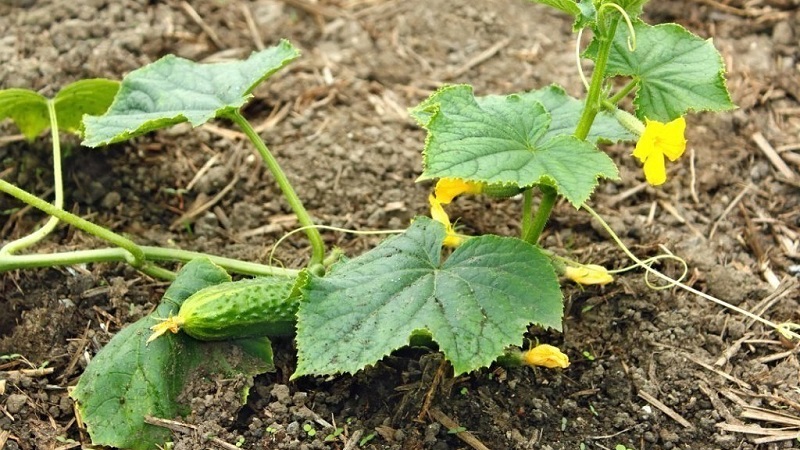
What to plant after cucumbers
It is not worth planting cucumbers in the same place every year.... After them, they will take root well in the garden:
- radish;
- beans;
- cabbage;
- peas;
- potatoes;
- beet;
- onion;
- tomatoes;
- garlic.
Conclusion
A competent choice of soil and its correct preparation is the key to obtaining a rich harvest of cucumbers. Soil cultivation begins in autumn and ends in spring, before planting a crop. A week before sowing, gardeners bring acidity back to normal, and also saturate the earth with nutrients.